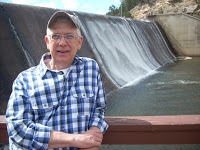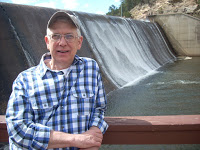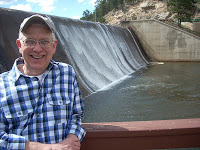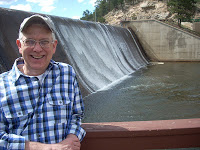I had been worrying over what I called an energy drain and presented my concern to my doctor along with my generally feeling off, itchy, and lethargic. I said, “I wonder if one of the two prescriptions I’m taking could be to blame.” Dr. Elango picked up his smart phone and started punching at it. I assumed he was connecting with the HMO’s website. The room was silent as he concentrated, his face expressionless like a student in a library. He frowned, then smiled at me and said, “Neither of your meds have those side effects.”
“Good,” I said, “because they seem to be helping me.”
The doctor asked, “Phillip, don’t you take some supplements?”
“I’ve quit most of them but still take a multi-vitamin and a single Saint John’s Wort capsule daily,” I said.
Doctor started poking at his phone again. “The symptoms you described are all possible side effects of St. John’s Wort. You know,” he looked up, “even supplements have side effects.”
I agreed to quit taking that pill even though I had an extra bottle not yet opened. I so wanted to feel better that practicality lost. Still, the next morning as I prepared to get rid of the pills, I hesitated since I had begun taking the herbal anti-depressant years before when my partner Michael died. Back then I didn’t want to slide into some emotional morass due to the grief I was experiencing. With the pill I seemed to do just fine. About two years later when Rafael died, I upped the dosage to two capsules a day mindful of a character in the TV show “Will and Grace” who finally admitted he’d been taking eight capsules daily. I didn’t want to be like him. Even though I had doubled my dosage, I found my grief more intense that time as if I were experiencing grief on top of grief. Eventually I returned to one pill daily and seemed just fine. But the fine effect apparently failed after fifteen years and gave me the group of symptoms I described to my doctor. I quit and have nothing more to say about the episode except that when I followed my doctor’s advice those symptoms disappeared.
But now some months later I am worrying over a slight feeling of anxiety I cannot seem to overcome. I’m tired of how I feel, but at least I’ll have something to say to my doctor at my next physical still seven months off. I feel worked up and have less energy than I want, but I don’t have those age-related unrealistic desires like returning to what I was at age thirty-five. I just want more pep so I can accomplish more things with the time I have available. I am open to advice from friends but most of them think I’m already too busy. I don’t want more social responsibilities or more leadership in any programs. I have plenty of that to keep me at least half awake, and some nights way too awake or awakening from some responsibility dream or worse yet some date I had made but hadn’t put on the family calendar. But to call any of this actual worry or actual anxiety—you know of the clinical type—doesn’t seem warranted.
Doctor did give me some great practical advice about one of my symptoms, dry skin. He said, “Get some lotion and put it on every day.” I had been using sunscreen for many years but hadn’t considered adding just plain old lotion. I didn’t want to begin smelling like a rose or a lily so I bought lotion for men. Even so, a friend embracing me one day said, “You smell good.”
Like a good queer I said, “Well thank you,” but just at the last second stopped myself from saying, “I try.” You see I’m a self-respecting queer. So surely I will get over the energy drain quickly enough. And I’ll begin wearing enough lotion the rest of my life for the wind not to cause unnecessary friction and enough for anxieties to slide right off my shoulders. At least those are my goals. “Energy drain, be gone.”
© 28 November 2016
About the Author
Phillip Hoyle lives in Denver and spends his time writing, painting, and socializing. In general he keeps busy with groups of writers and artists. Following thirty-two years in church work and fifteen in a therapeutic massage practice, he now focuses on creating beauty. He volunteers at The Center leading the SAGE program “Telling Your Story.”
He also blogs at artandmorebyphilhoyle.blogspot.com









